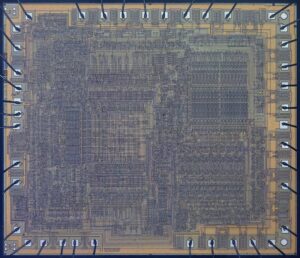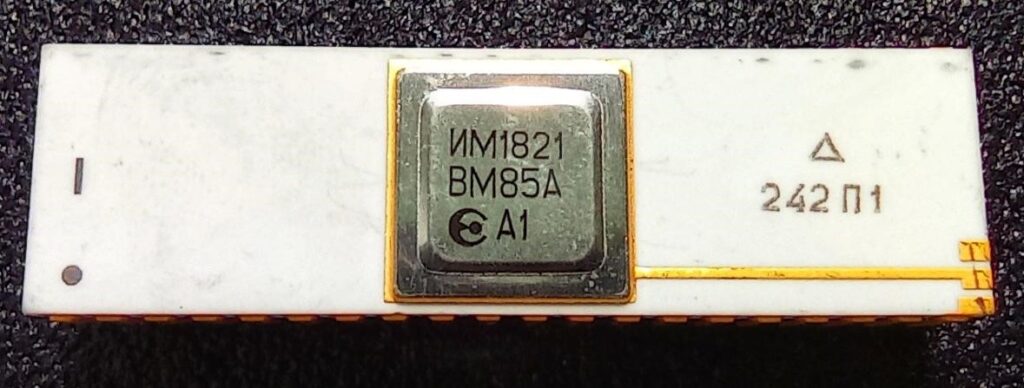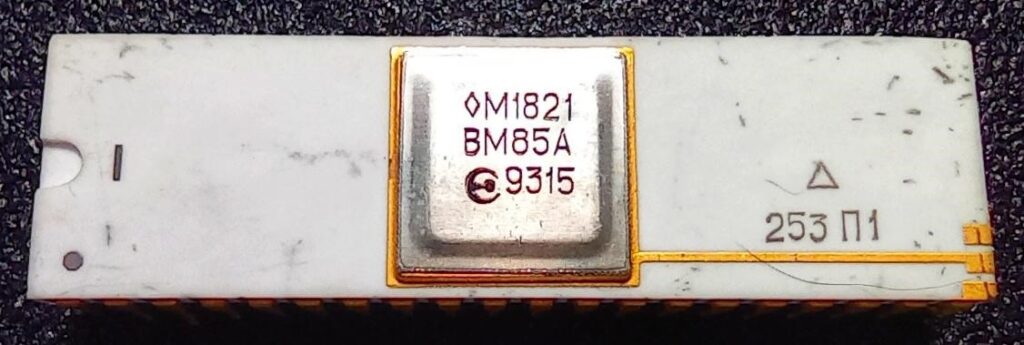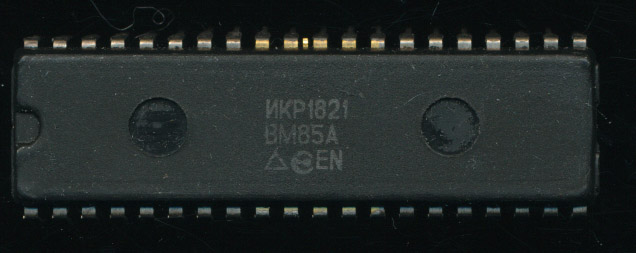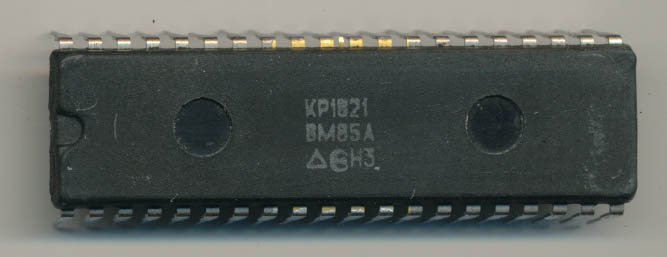The Soviet CMOS 8085 CPU: 1821VM85A
Omitting the history of the creation of the first microprocessors (such as the 4004) , let’s turn to the moment when 8-bit microprocessors (Intel 8080 and 8085, Motorola 6800 and Zilog Z80 ) firmly conquered the market. It was the time of the second half of the seventies in the last century. It became obvious to specialists that the future belongs to microprocessors, and if you do not invest in these technologies, you will simply fall out of the number of the developed countries. This was well understood by the advisers to the leaders of the USSR at that time. But they also understood that, since the countries of the Eastern Bloc were somewhat late in this work from US, it would be wise to copy the microprocessors already developed overseas. After all, these microprocessors have already solved many of those problems that would take months and years to solve on their own, not to mention huge monetary costs. (It should be noted that the Soviet Union had its own original developments. For example, the 587 series microprocessor kit, this included three microcircuits.)
| 587IK1 | 587IK2 | 587IK3 |
 |
 |
 |
At that time, it was not clear which chip needed to be copied – Intel, Motorola or Zilog. Each of them was good in its own way, and it was impossible to predict the outcome of the competition between them. In the end, it was decided to copy all microprocessors. And in order not to scatter forces, the enterprises of the USSR were entrusted with copying Intel products. Little Bulgaria got Motorola and Zilog chips were copied in East Germany. This is how Intel, without investing a single dollar, conquered the Soviet market. Microprocessors and microcontrollers under the names 580IK80A (8080A), 1821VM85A (80C85A), 1816VE48 (8048), 1816VE51 (8051) became native to Soviet electronic engineers.
The hero of this article is the 1821VM85A-8 bit microprocessor, a functional analogue of Intel 8085A (but in CMOS). It has been developed since the beginning of the 80s at the Novosibirsk plant of semiconductor devices. Production began in 1985. According to Wikipedia, the manufacturing technology is CMOS, 3 microns. According to other sources 0.7 microns, silicone-on-sapphire. Clock frequency – 5 MHz. Theoretically, it can work at a higher frequency.
The die contains about 6500 transistors. When copying the 80C85, several schematic and topological errors were corrected. As a result, the analogue saves stored data without a minimum clock, but the original does not. This manifests itself when the clock frequency changes. When it is reduced to zero, the microprocessor falls asleep, but the contents of all registers remain unchanged. When clocking resumes, the microprocessor continues to execute the program from where it left off.
It was produced in both ceramic and plastic 40-pin DIP packages.
At the beginning of the marking of microprocessors, the letters I (И), K, M could be used. I did not succeed in finding out the meaning of the letter I (И) in the marking. Sometimes the letter A is missing from the microprocessor name. The letter I (И) is often present in the marking of the chips of the Novosibirsk plant of semiconductor devices. Here is an example of a microcontroller from this manufacturer.
Marking the production date on chips was done in two ways. The first is the usual one, consisting of four digits. The first two digits are the year of manufacture, the second two digits are the week of that year. The second marking method corresponds to this table.
Posted in:
CPU of the Day


